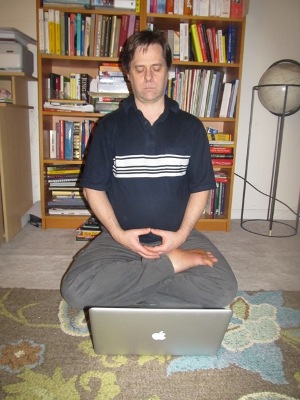Rethinking Set Theory
Posted by Tom Leinster
Over the last few years, I’ve been very slowly working up a short expository
paper — requiring no knowledge of categories — on set theory done categorically. It’s now progressed to the stage
where I’d like to get some feedback.
Here’s
the latest draft.
(Edit: Now revised in the light of your helpful comments below — thanks! You can find it at
arXiv:1212.6543, and it’s published as American Mathematical Monthly 121 (2014), no. 5, 403–415.)
Typos, clumsy wording, mathematical matters: I want to hear
it all.
I have one request, though. If you do leave a comment, please take more time than you usually would to make sure it’s (1) carefully worded, (2) respectful to other people, and (3) scrupulously polite. Sorry to ask this: normally I wouldn’t feel the need, but there’s an unfortunate history of discussions of categorical set theory turning bad-tempered, and I really want to avoid that happening here.
So, if you’re composing a comment and you feel yourself getting hot under the collar, please save a draft, sleep on it, and come back later when your temperature has returned to normal. There’s no hurry: this blog isn’t going anywhere.
I’d also like to hear about anything I’ve written in my draft that you think is overstated. (I’m particularly keen to hear about this from people who fundamentally share my views.) This paper is intended to be thought-provoking, and I know there are parts with which some people will disagree. However, it’s definitely not supposed to be inflammatory. I want every statement I’ve made to be careful and measured, so I’ll be grateful if you can help me find places where I might have slipped up.
I won’t write much here about the paper, since it is itself expository. Experts will immediately recognize it as a description of Lawvere’s Elementary Theory of the Category of Sets, which states that sets and functions form a well-pointed topos with natural numbers and choice. (Semi-experts might want the help of this supplement: in my draft, I’ve slightly rephrased the standard axioms, but the supplement proves that the rephrasing makes no difference.)
However, it’s very much not written for experts, or even semi-experts. No knowledge of categories whatsoever is needed to read it. Nor do I attempt to teach the reader anything about categories.
What’s this paper supposed to achieve? I’ll quote from the first page:
… many of us will go our whole lives without learning ‘the’ axioms for sets, with no harm to the accuracy of our work. This suggests that we all carry around with us, more or less subconsciously, a reliable body of operating principles that we use when manipulating sets.
What if we were to write down some of these principles and adopt them as our axioms for sets? The message of this article is that this can be done, in a simple, practical way.
There are probably many ways of doing this, but the one I describe is categorical in spirit.
Relatively few mathematicians have heard of categorical set theory, but my experience is that among those who have heard of it, there are some common misconceptions. These misconceptions are largely a result of bad communication, so I’ve done my best to address them directly.
One misconception is that because of the involvement of categories (and even toposes, God forbid), categorical set theory must be awfully sophisticated. I try to dissolve that assumption by stating the axioms in a wholly elementary way, not using the word ‘category’ once. The box on the first page shows that the axioms—informally paraphrased—are just a bunch of completely mundane statements about sets:
- Composition of functions is associative and has identities.
- There is a set with exactly one element.
- There is a set with no elements.
- A function is determined by its effect on elements.
- Given sets and , one can form their cartesian product .
- Given sets and , one can form the set of functions from to .
- Given and , one can form the inverse image .
- The subsets of a set correspond to the functions from to .
- The natural numbers form a set.
- Every surjection has a right inverse.
As I said, this is an informal summary, and there is some distance between the statements above and the precise versions (which you can find in the paper). However, if I’ve done my job properly, even the precise versions should come across as run-of-the-mill, unremarkable, statements about sets as used in everyday mathematics.
I also address the misconception that, because the definition of category uses something like the notion of set, categorical set theory must be circular. But I won’t go into that here, because you can find it in my draft — which I’m hoping you’re about to go and read, then carefully comment on here.



Re: Rethinking Set Theory
Good morning, Tom, you are now waking up, slowly,
you are turning on your computer, it is still
dark outside, you have new email; you are reading
in your email, your tenth axiom is inconsistent;
you are completely relaxed, yet you do not feel
like sleeping; you are now a constructivist,
everything is OK, you will make yourself a cup
of green tea; it is still dark outside…
No, I just wanted to say that while maybe not
strictly inconsistent, I think it is a pity to
build a notational idiosyncrasy (right-to-left
composition) into the axioms. Why not say
section instead of right-inverse?
It is still dark outside.